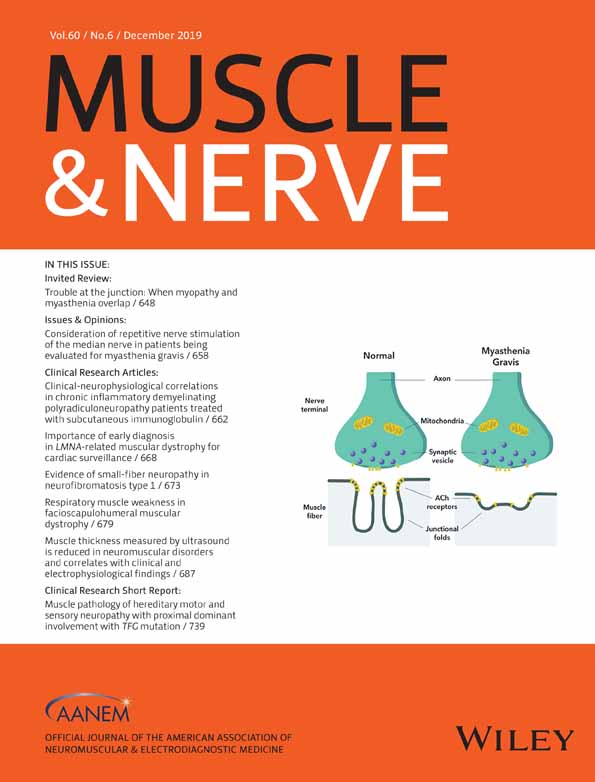Muscle pathology of hereditary motor and sensory neuropathy with proximal dominant involvement with TFG mutation
Abstract
Background
Hereditary motor and sensory neuropathy with proximal dominant involvement (HMSN-P) is characterized by adult onset, a slowly progressive course and autosomal dominant inheritance. It remains unclear whether myopathic changes occur histopathologically.
Methods
We encountered 2 patients in a family with a heterozygous p.P285L mutation in TRK-fused gene (TFG), which is known to cause HMSN-P. The affected individuals developed proximal-dominant muscle weakness in their 40s, which slowly progressed to a motor neuron disease-like phenotype.
Results
Muscle biopsy showed myopathic pathology including fiber size variability, increased internal nuclei, fiber splitting, and core-like structures, associated with neurogenic changes: large groups of atrophic fibers and fiber type-grouping. Immunohistochemistry revealed sarcoplasmic aggregates of TFG, TDP-43, and p62 without congophilic material.
Conclusions
The present study demonstrates myopathic changes in HMSN-P. Although the mechanisms underlying the skeletal muscle involvement remain to be elucidated, immunohistochemistry suggests that abnormal protein aggregation may be involved in the myopathic pathology.
Abstract
CONFLICT OF INTEREST
None of the authors has any conflict of interest to disclose.




